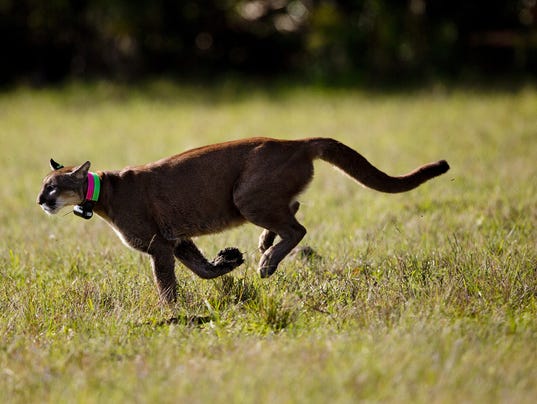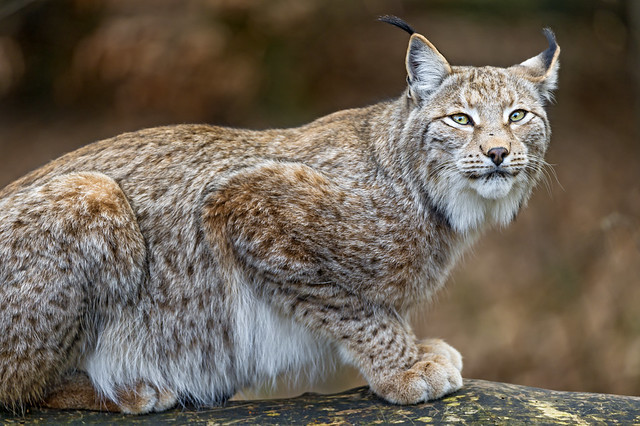Staff Writer
Published: 21 June 2014
WYLIE — Lisa Williams was making her usual rounds at In-Sync Exotics,
escorting visitors through the habitats that house more than 60 large
felines. But Tuesday’s tour was different. That morning, Kiro, a
white tiger, had died. His habitat stood empty. A sign with his name and
picture, hung on the enclosure’s chain link fence, was just a humble
reminder of the feline that used to play in the sanctuary’s pools and
make “chuffing” sounds at visitors and staff members.
Hugs and
tears among the sanctuary’s staff were not unexpected. A year ago, Kiro
was one of the first cats at In-Sync to contract canine distemper. He
survived the initial viral infection, and the sanctuary hasn’t
determined whether his death was related to the 2013 distemper outbreak
that killed eight big cats and made more than 20 others sick. The
volunteers still refer to the virus as “the d-word,” their euphemism for
an epidemic that reduced powerful predators to frail and dying animals.
Williams
remembered last summer’s 24-hour watches over sick cats and the “pills
and pills and pills” that she had to keep feeding them. Many of the cats
who survived the virus still longingly look to Williams for affection
and playtime. “I love you!” she said to Rafiki, a lion, while playfully rattling an old Folgers can near him.
Williams,
who’s volunteered at In-Sync for five years, said it’s important that
no one mistake the big cats for pets; however, the bond between the
staff and the animals is special. A lion will snuggle up against
the fence around its enclosure to get close to Williams. Cincinnati, a
tiger, likes to play peekaboo with Williams, peering at her over the rim
of his large, metal bathtub.
Williams can distinguish the cats by
minute facial details, and she even knows how each one walks.
She
gestured to one of the enclosures, which is shared by several tigers. It
used to house one who died in the distemper episode. “This is where Lucca’s was,” Williams said, pointing to an empty spot between three cats’ pictures on the fence. Though
In-Sync’s cats had been vaccinated against feline distemper, there is
no vaccination to protect cats from the canine version of the virus. She
said she knew the epidemic was worsening last year when she stopped
hearing coyotes around the sanctuary. Coyotes are canines, susceptible
to distemper. Since the outbreak, In-Sync has taken precautions to avoid lightning striking twice.
The
sanctuary administered vaccines that guard against the ferret version
of distemper, in the hope that it might help protect the big cats from
the canine strain. Additionally, employees use a bleach foot bath when
entering and exiting the cats’ habitats to avoid tracking debris from
one enclosure to another.
Williams said the sanctuary expects to
break ground later this summer on an on-site veterinary clinic, where
felines can receive medical treatment without leaving home. During last
year’s distemper outbreak, the sanctuary had to transport its sick
animals to a nearby vet in Wylie. The new clinic will also include space
where infected animals could be quarantined. Last summer, In-Sync had
to make do with makeshift quarantine areas.
Normally, felines
don’t contract canine distemper. The virus was believed to have been
transmitted last summer by infected raccoons, who would scurry across
the chain-link tops of the cats’ enclosures, sometimes defecating. The
raccoon feces, in turn, could have infected cats who ate the grass or
played in areas where it landed.
More than two decades ago, a far
more destructive distemper outbreak struck the Wildlife Waystation
animal sanctuary in California’s Angeles National Forest. The sanctuary,
just north of Los Angeles, was forced to close for about a year after
canine distemper claimed 17 big cats in just three months.
In all,
about 65 of Wildlife Waystation’s felines were affected by the illness
at once, said Martine Colette, the sanctuary’s founder and director. “By
the third day [of the outbreak], we knew we had something horrific on
our hands, and we took the appropriate precautionary measures,” she
said. “It still did not help.”
There, too, raccoons and other
native wildlife were suspected of spreading the virus. The year the
epidemic struck, there had been a boom in the raccoon and skunk
population, Collette said. A similar boom was observed last summer
in parts of Collin County near In-Sync Exotics. The boom was followed
by a swift decline in the population, as distemper ravaged raccoon
gazes. Plano Animal Services saw about 170 raccoons die during an
outbreak from January to March 2013.
Cliff Moore, owner of Animal Services Inc., said these boom-bust disease cycles are a hazard for any wildlife population. “We recognize when it’s fixin’ to happen,” he said. “It hurts, there’s no doubt about it.” Animal Services Inc., based in Van Alstyne, contracts with cities and other jurisdictions to manage wildlife problems.
In-Sync
Exotics was founded in March 2000 by Vicky Keahey, a veterinary
technician. Nine years earlier, someone had abandoned an 18-month-old
cougar at the veterinary office where she worked. She turned to the
Texas Parks and Wildlife Department for advice on how to care for a
cougar, and established a rapport with people there. A few years later,
when parks and wildlife officials found themselves with a cougar on
their hands, they asked Keahey if she would take it in. By the time she
acquired her third big cat, a Bengal tiger, in 1998, she decided to form
a nonprofit and start In-Sync.
Despite the tribulations brought
on by last summer’s outbreak, Williams said, the sanctuary earlier this
year rescued 11 tigers and three cougars. And in late May, it took in
several lions. “One of them is a lion cub, and he’s so stinkin’ cute,” she said.
All
of In-Sync’s cats have tested negative for canine distemper, and
Williams hopes the scourge of 2013 is far behind, never to return. “There
still is that little fear in the back of your brain that the cats who
seem to have beaten it will come down with more symptoms,” she said. “My God, I hope it has ended.”
source



















2.jpg)

































